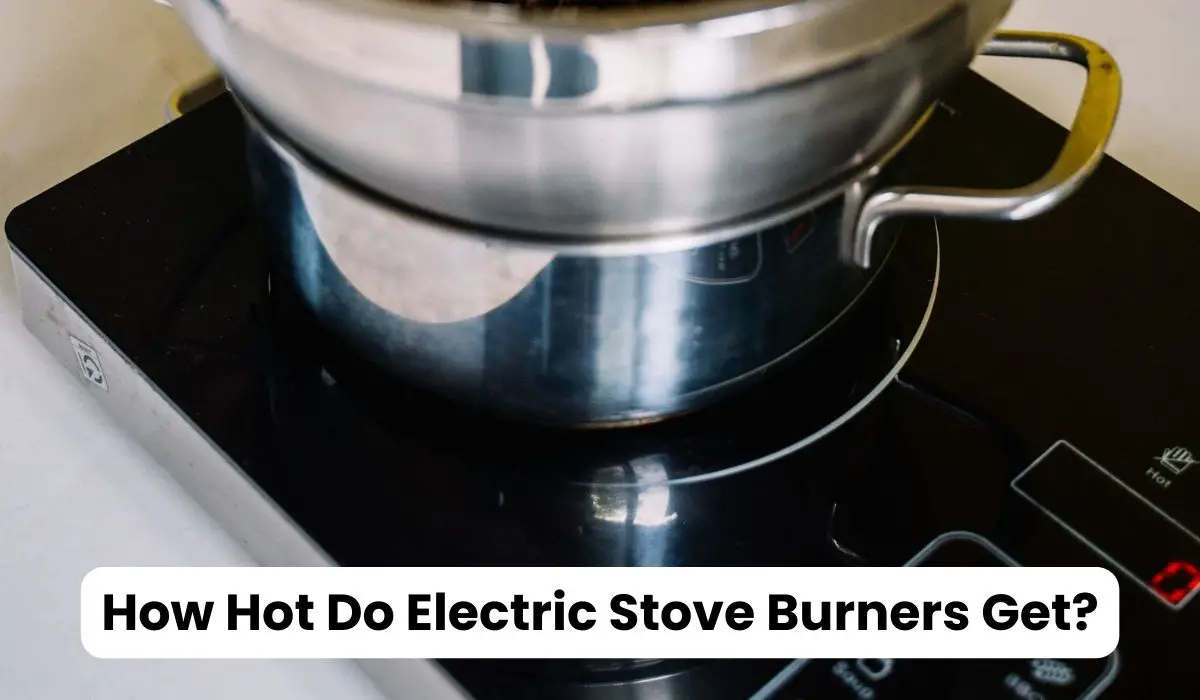When it comes to cooking, one of the most essential appliances in our kitchen is the electric stove. Whether preparing a simple breakfast or cooking a gourmet dinner, understanding how hot electric stove burners get is crucial for achieving culinary perfection. In this guide, we will explore the depths of electric stove burners, their temperatures, cooking times, safety measures, and much more.
Table of Contents
Types of Electric Stove Burners:
Electric stove burners are the magic elements that make our stovetops work, helping us cook yummy meals. They come in different types, and each has its unique way of making heat. Let’s explore the types of electric stove burners.
1. Coil Burners
Imagine a spring all squished up, like a slinky. Coil burners look a lot like that. They’re like little electric springs that get hot when you turn them on. These burners are super sturdy and have been around for a long time. When you put your pot or pan on them, the coil gets red-hot, and that’s how it cooks your food.
Coil burners are like superheroes – they can get hot, which is excellent for boiling water or frying stuff fast. But they can also take a little time to cool down once you turn them off, so you must be careful not to touch them when they’re still hot. Think of them like the stovetop version of a hot potato.
2. Smoothtop Burners
Smoothtop burners are like the cool kids in the stove world. They have a flat, smooth surface, almost like a glass table. When you turn them on, they use electricity to warm and toasty the glass. Then, that warmth cooks your food when you put your pots and pans on top.
These burners are fantastic because they’re super easy to clean. No coils, funny nooks, or crannies to worry about – wipe, and you’re done! They also look sleek and modern, which makes your kitchen look fancy.
But remember, they can be a bit like secret agents – they heat up fast and cool down quickly when you turn them off. So, no hot surprises after you’re done cooking.
3. Hot Plates
Hot plates are like the portable friends of the stove burners. You can move them around and use them wherever you want, as long as there’s an electric outlet nearby. They’re perfect for camping or an extra burner in your kitchen.
Hot plates come in coil and smooth top styles, like the big stove burners we discussed earlier. They’re like tiny stovetops that you can carry around with you.
How Hot Do Electric Stove Burners Get?
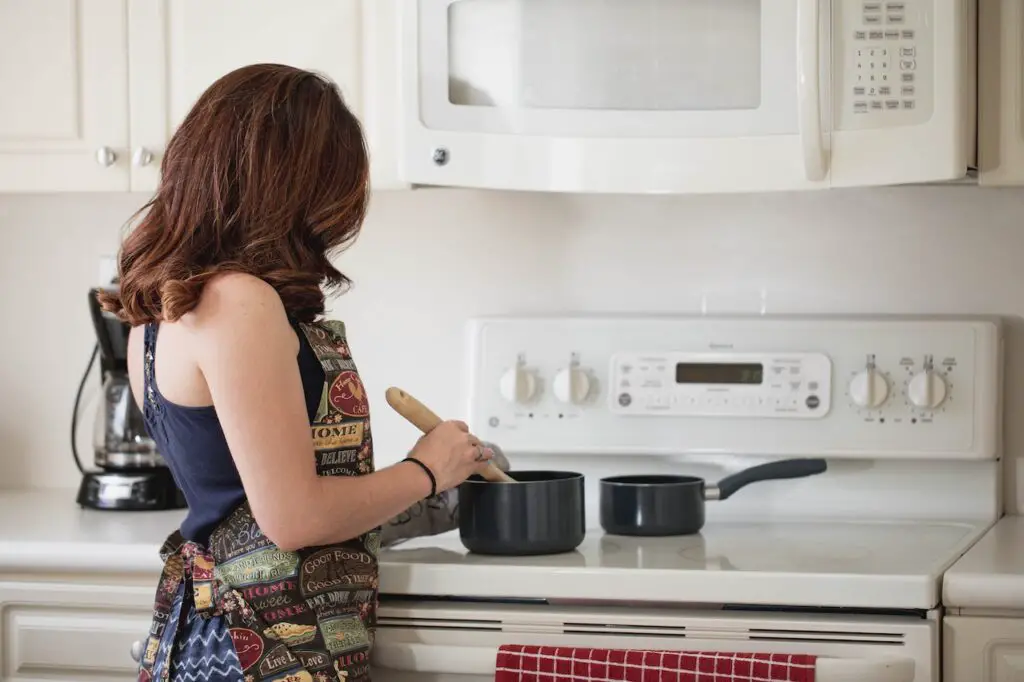
Electric stove burners can get pretty hot, and it’s essential to be careful around them. When you turn on an electric stove, electricity flows through a coil or element under the burner, and this coil gets hot. Just like when you turn on a light bulb, it starts to glow because of the electricity passing through it. In the case of an electric stove, the coil or element gets hot enough to cook your food.
The exact temperature an electric stove burner can reach depends on a few factors, like the setting you choose and the type of stove you have. Generally, they can get as hot as 700 to 1000 degrees Fahrenheit (370 to 540 degrees Celsius) on their highest settings. That’s hotter than most things you’ll find in your kitchen.
Now, why does this matter? Well, knowing how hot electric stove burners get is essential for a few reasons:
Safety: First and foremost, being cautious around hot burners is essential. Please don’t touch them when they’re on, and be careful not to place anything on them that could catch fire or melt. Forever use cooker mitts or pot holders when handling pots and pans on a hot burner.
Cooking: Different recipes require different temperatures. You often must adjust the heat to simmer, boil, or fry your food. Knowing how hot your stove can get helps you control cooking and prevent overcooking or burning your meals.
Energy Efficiency: Being aware of the heat levels of your electric stove can also help you save energy. If you don’t need it to be super hot, turning the burner to a lower setting can reduce electricity usage and save you money on your energy bill.
Cookware Selection: Using the correct type of cookware on your electric stove is also crucial. Cookware created of stainless steel, cast iron, or aluminum works best because it can distribute the heat evenly. Using the right cookware ensures your food cooks properly.
Electric stove burners can get hot, up to 700 to 1000 degrees Fahrenheit, depending on the setting. Understanding this heat level is essential for safety, proper cooking, energy efficiency, and selecting the right cookware. So, always be cautious and use your electric stove wisely to make delicious and safe meals.
Electric Stove Burner Temperature Range:
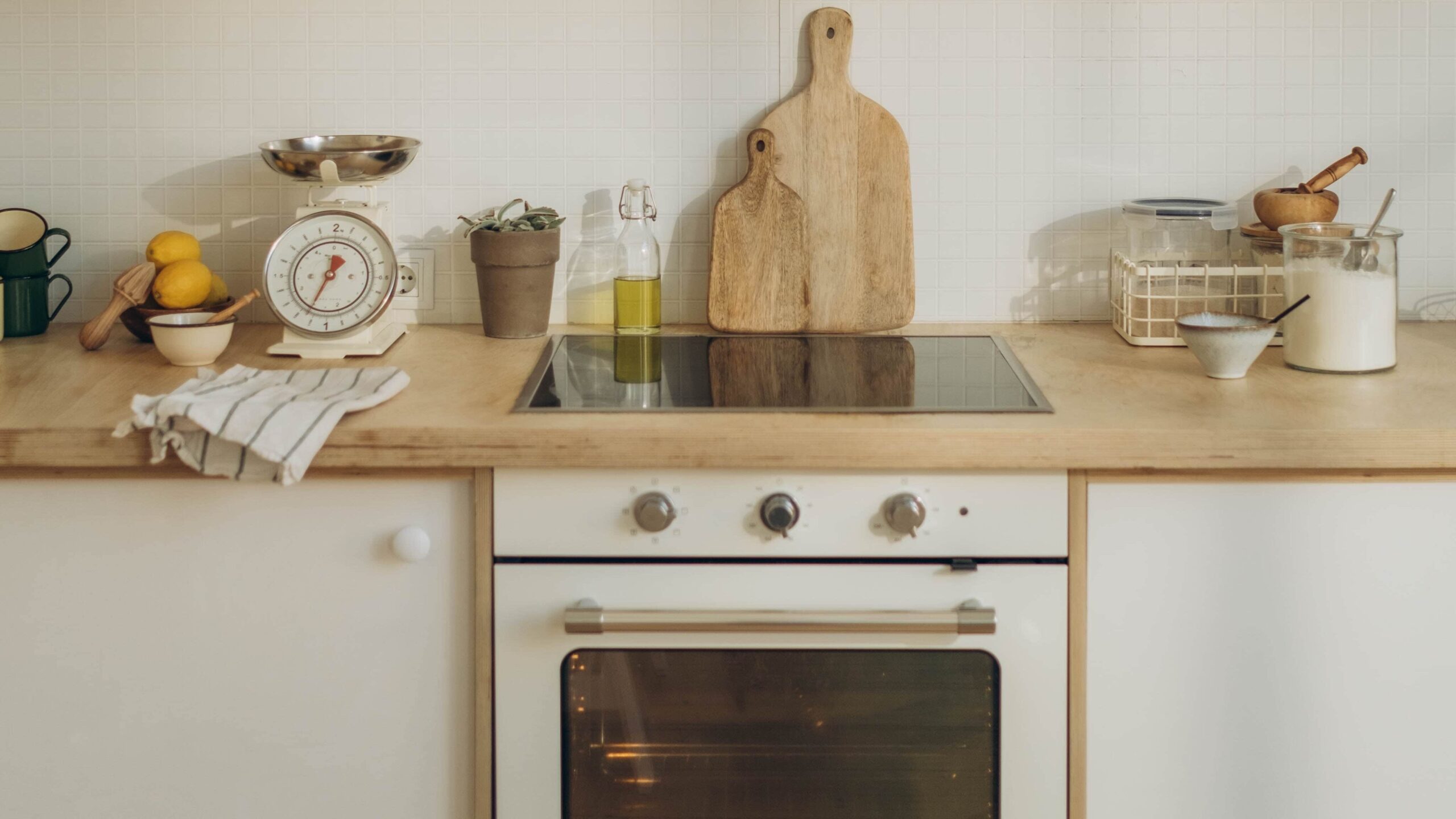
Electric stove burners typically have a temperature range of 100°F (38°C) to 700°F (371°C). This broad spectrum allows for versatile cooking options, from simmering delicate sauces to searing steaks. Let’s break down this temperature range further:
Low Heat Setting:
The lowest setting on most electric stoves hovers around 100°F (38°C). It’s perfect for keeping food warm without overcooking it.
Medium-Low to Medium Heat:
For gentle simmering and slow cooking, you’ll typically use temperatures between 200°F (93°C) and 300°F (149°C).
Medium-High Heat:
When you need to sauté vegetables or cook proteins thoroughly, you’ll work within the range of 300°F (149°C) to 400°F (204°C).
High Heat Setting:
At the highest setting, electric stove burners can reach temperatures up to 700°F (371°C). This extreme heat is excellent for boiling water rapidly and achieving a quick sear on meats.
Safety Precautions
Cooking with electric stove burners is safe when you take the proper precautions:
Use Appropriate Cookware: Ensure your cookware is compatible with electric stoves and is in good condition.
Keep Flammable Items Away: Clear any flammable materials, such as kitchen towels or paper, away from the burners.
Turn Off When Done: Always turn off the burner when you’ve finished cooking.
Use Pot Handles Safely: Keep pot handles turned inward to prevent accidental spills.
Install a Smoke Detector: In case of overheating or spills, having a smoke detector in the kitchen is a wise safety measure.
Why Does an Electric Stove Burner Overheat?
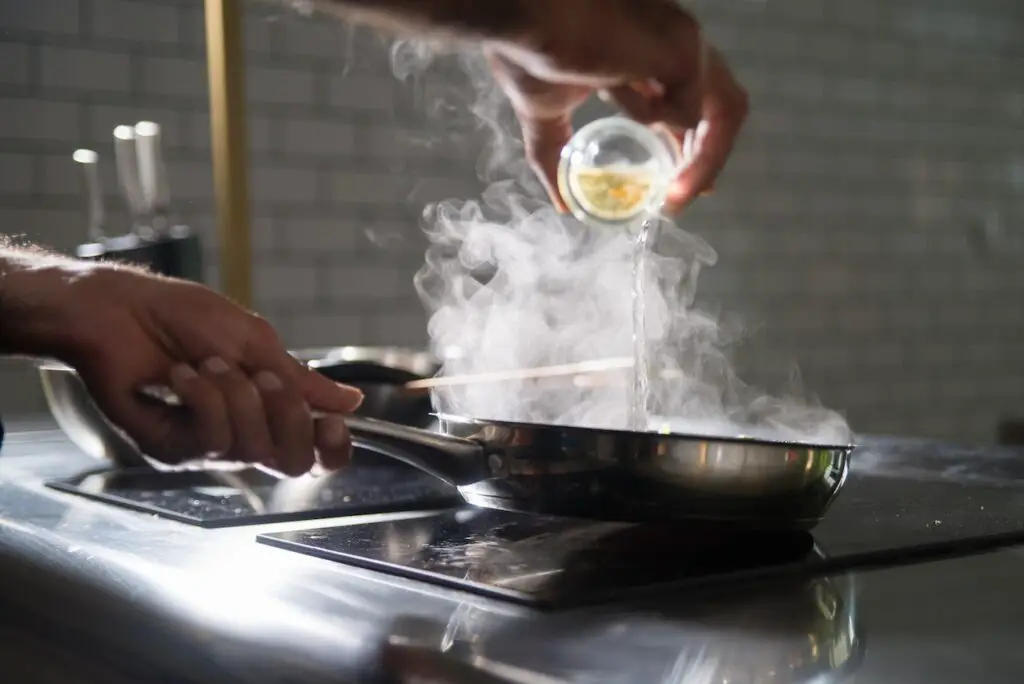
Why does that electric stove burner sometimes get way too hot? Well, let’s put on our detective hats and find out the mystery behind it.
Too Much Power:
Imagine you have a super-fast toy car, and you press the gas pedal all the way down. What happens? It goes super fast, right? Well, it’s like that with electric stove burners. They have something called “wattage,” which is like their power level. The higher the wattage, the more power they use.
Now, sometimes, if you set the stove to the highest heat, it’s like giving it too much power. Just like our toy car, the burner starts heating up like crazy. That’s when it can overheat, and things might start to smoke or even catch fire if you’re not careful. So, don’t constantly max out the heat setting unless you really need to cook something super quickly.
Wrong Cookware:
Imagine trying to wear shoes that are way too big for your feet. They’d flop around, and you’d trip, right? Well, think of your pots and pans as shoes for the burner. If you put a tiny pot on a big burner, there’s too much space, and the heat escapes, making the burner overwork to heat the whole area.
Conversely, if you put a big pot on a tiny burner, it’s like trying to stuff your feet into shoes that are way too small. The heat can’t spread properly, and it makes the burner work too hard, causing it to overheat. So, always use the correct size cookware for the burner you’re using to keep things just right.
Old and Tired:
Imagine you have a toy that you’ve played with a gazillion times, and it starts to get a bit tired. It might not work as well as it used to. Well, electric stove burners can be like that, too. Over time, they can get old and worn out from all the cooking.
When this happens, they might not regulate their heat correctly, and that can lead to overheating. If you notice your stove is getting up there in years and acting a bit funny, it might be time to ask a grown-up to check it out or get it fixed.
So, there you have it, detectives. Electric stove burners can overheat for a few reasons. Sometimes, it’s because we give them too much power, like pressing the gas pedal all the way down on a fast toy car. Other times, it’s because we use the wrong size cookware, like trying to wear shoes that don’t fit. And finally, burners can get old and tired, just like our favorite toys.
The key to preventing overheating is using the correct heat setting, the right cookware, and keeping an eye on your stove’s age. That way, you’ll have safe and tasty cooking adventures every time.
How Do Electric Stoves Work?
Reasons Why Some Electric Stoves to Heat More Quickly Than Others?
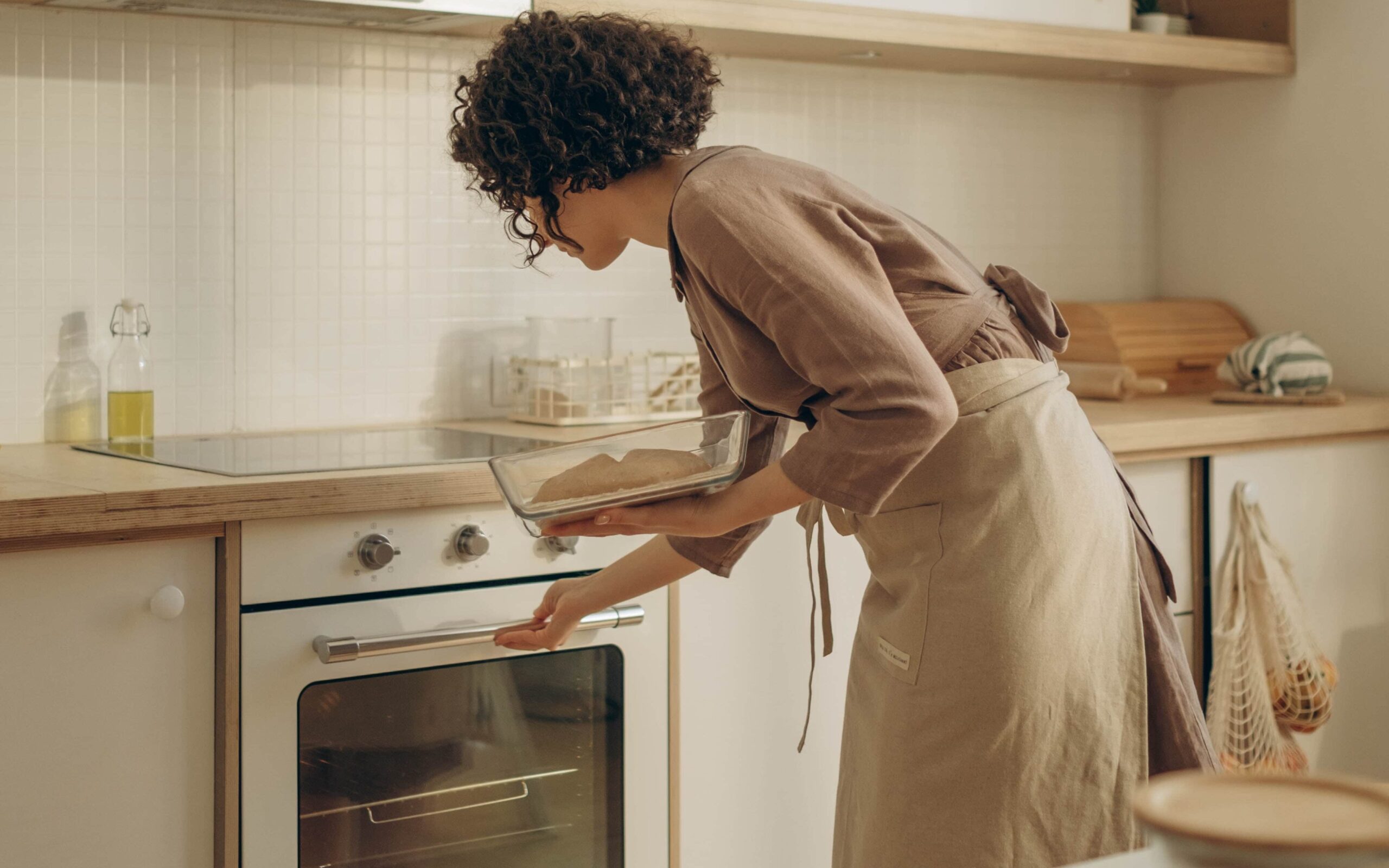
Have you ever wondered why some electric stoves heat up super fast while others seem to take their time? Well, grab your magnifying glass because we’re about to uncover the secrets behind this puzzle.
1. The Wattage Wonder
Okay, let’s start with something called “wattage.” Imagine it’s like the power level of your stove, just like how a superhero has different powers. Some stoves have higher wattages, like superheroes with super strength, and they can heat up really quickly. Others have lower wattages, like regular folks, and they take a bit longer.
So, when you turn on a stove with high wattage, it’s like giving it a turbo boost, and it gets hot in a flash. But the ones with lower wattage are more like slow and steady turtles – they take their time to warm up. It’s all about how much power they have, and that’s why some stoves are speedier than others.
2. Size Matters
Picture this: you have a tiny slice of pizza, and you put it in the oven. It’s going to cook way faster than a giant pizza, right? Well, stoves work the same way. The size of the heating element, which is like the part that gets hot, makes a big difference.
Some stoves have prominent heating elements, like a giant slice of pizza, so that they can heat a big pot or pan super quickly. Others have more minor heating elements, like a mini pizza slice, so they take a bit longer to get things sizzling. So, it’s not just about the stove itself; it’s also about the size of the hot part.
3. The Insulation Insight
Now, let’s talk about insulation. Imagine you’re outside in the winter, and you have a warm, cozy jacket. You’ll stay toasty, right? Well, stoves have something similar called insulation, which helps keep the heat where it belongs – inside.
Stoves with good insulation can keep the heat from escaping, making them heat up faster. It’s like having a super snug jacket that traps all the warmth. But if a stove isn’t well-insulated, it’s like having a jacket with holes in it – some of the heat escapes, and it takes longer to get things cooking. So, insulation plays a sneaky role in how quickly stoves heat up.
Conclusion:
At the end of this article, we’ve unraveled the mystery of how hot electric stove burners can get and how they can reach scorching temperatures.
Remember, safety should always come first in the kitchen. Whether you’re an experienced cook or just starting to experiment with cooking, understanding the heat levels of your electric stove burners is crucial to prevent accidents and cook your favorite meals to perfection.
So, be mindful of those glowing red coils and use your newfound knowledge to whip up delicious dishes while keeping yourself and your loved ones safe.
FAQs
Can electric stove burners get hot enough for deep frying?
Yes, electric stove burners can reach the necessary temperatures for deep frying, especially on the high heat setting. However, it’s crucial to use a thermometer to ensure the oil reaches the desired frying temperature.
Is it normal for electric stove burners to cycle on and off?
Yes, electric stove burners often cycle on and off to maintain a consistent temperature. This is a normal operation, and it helps prevent overheating.
What is high heat on an electric stove?
High heat on an electric stove typically reaches temperatures between 700 to 800 degrees Fahrenheit (371 to 427 degrees Celsius).
